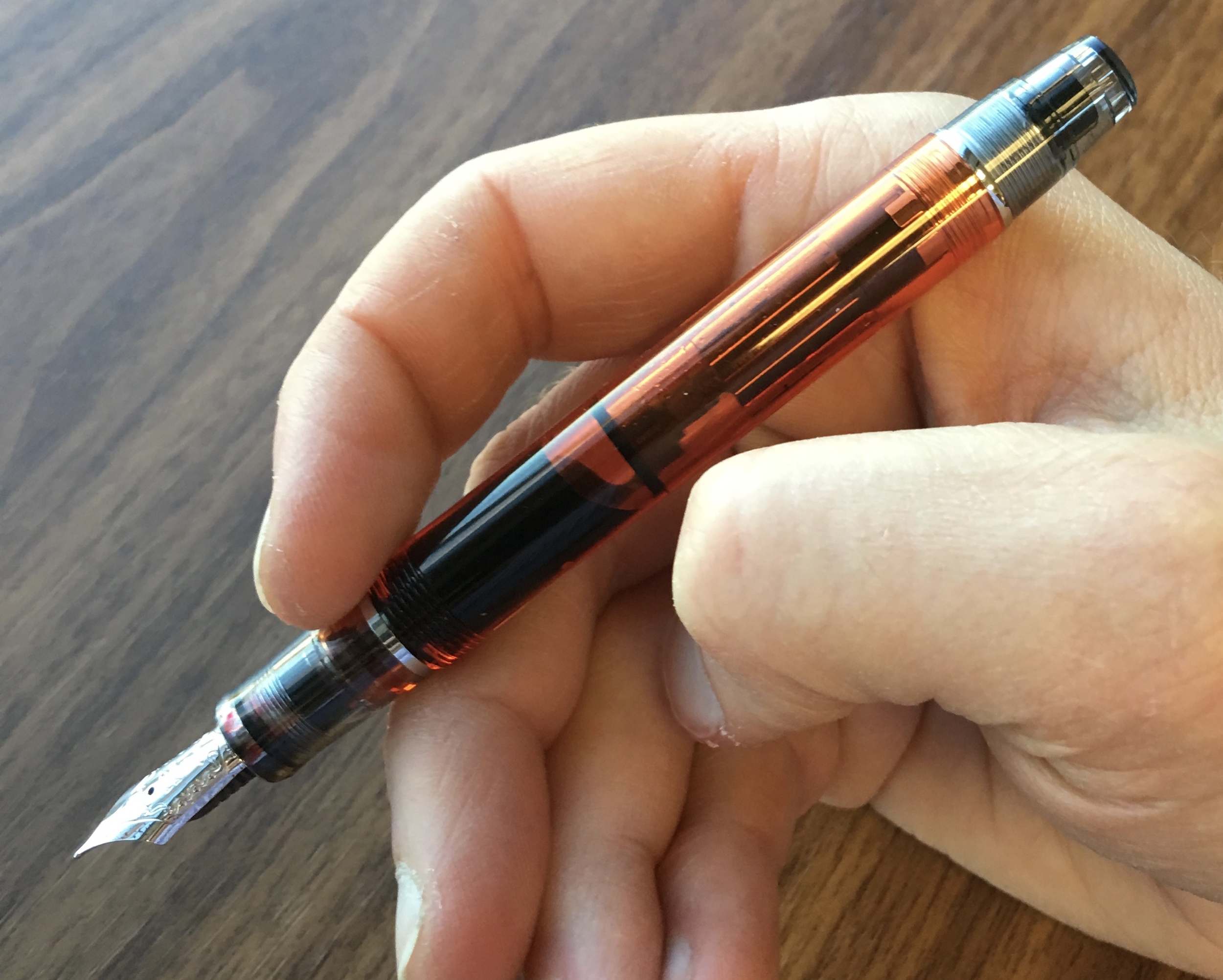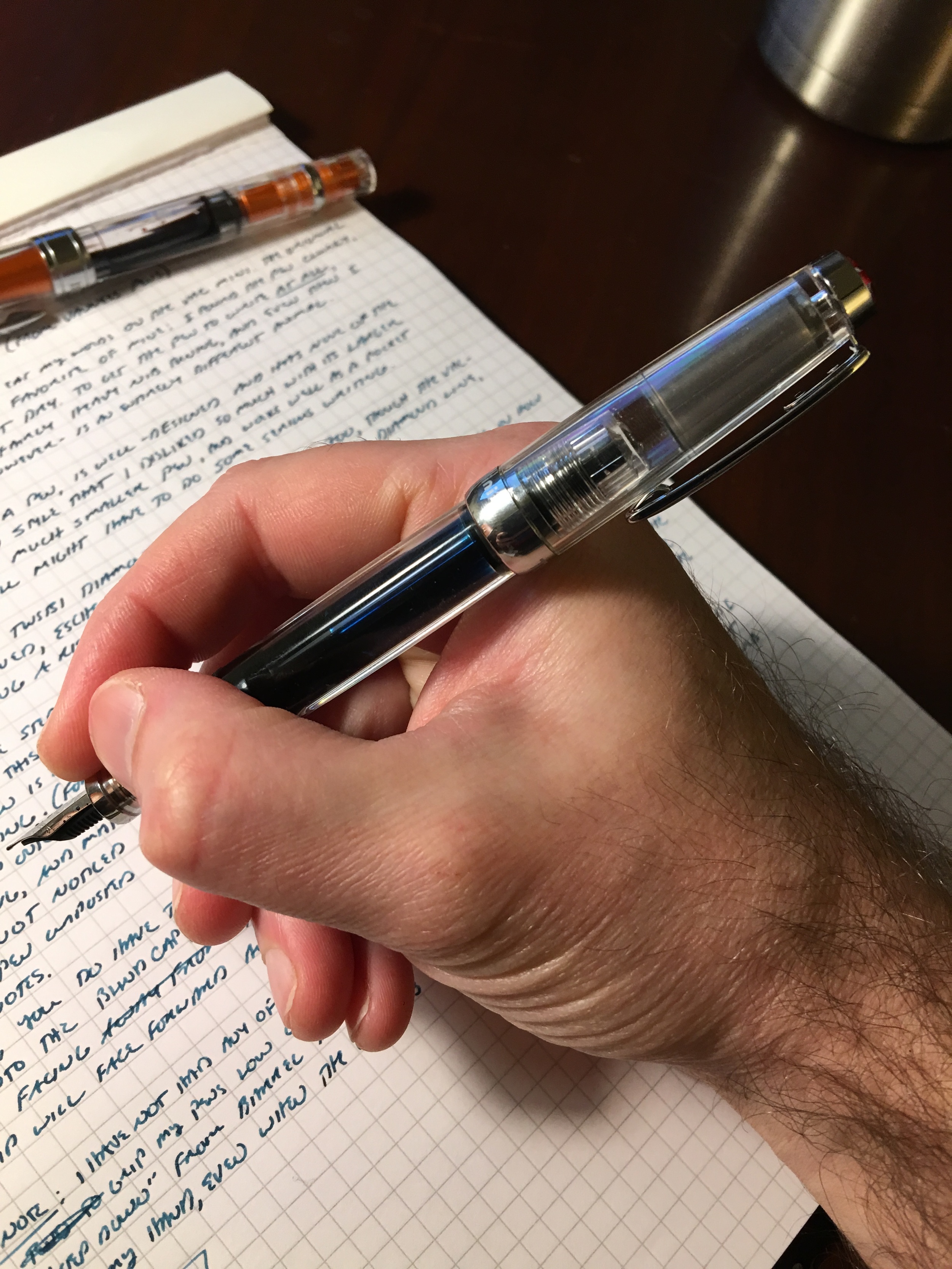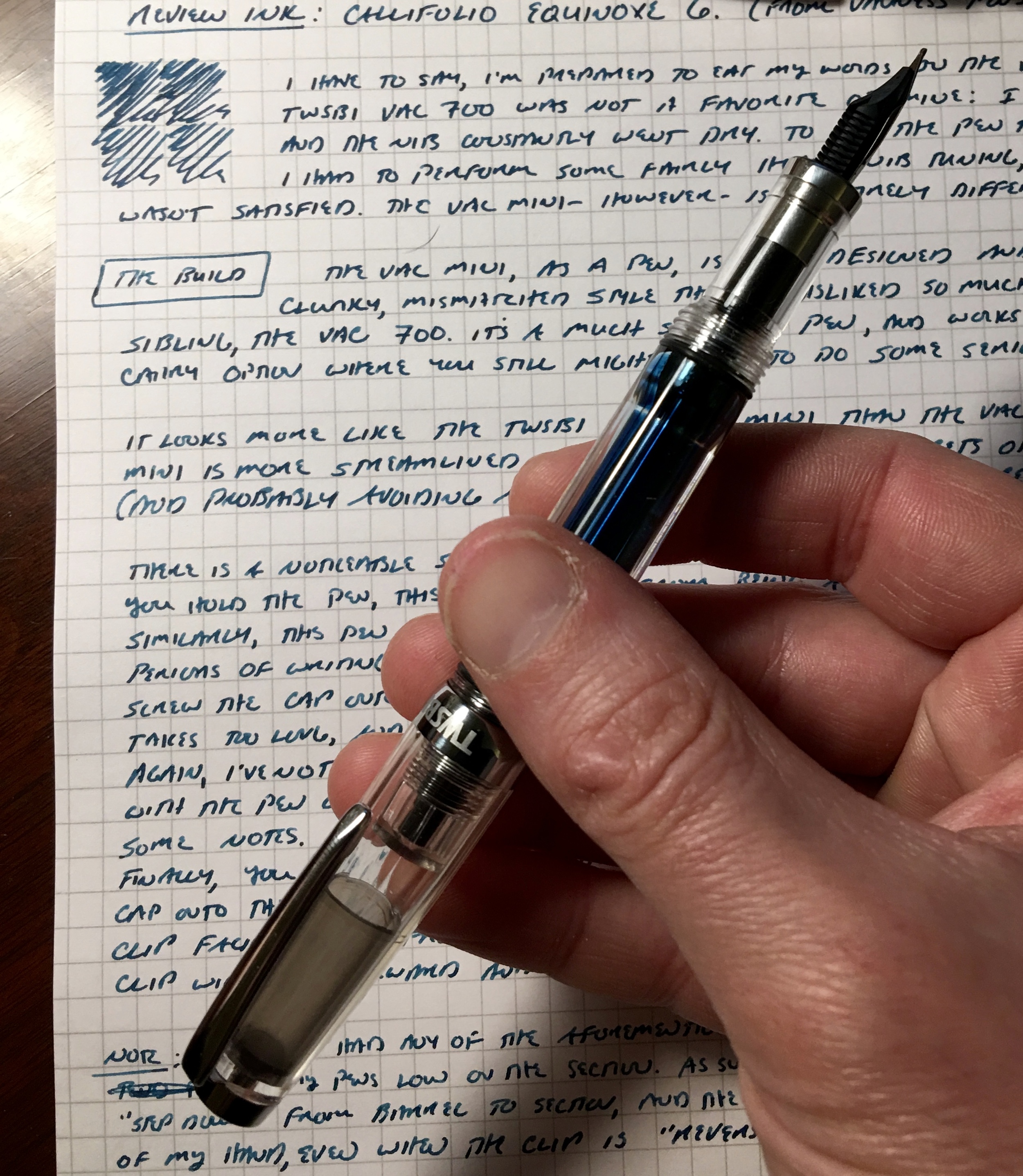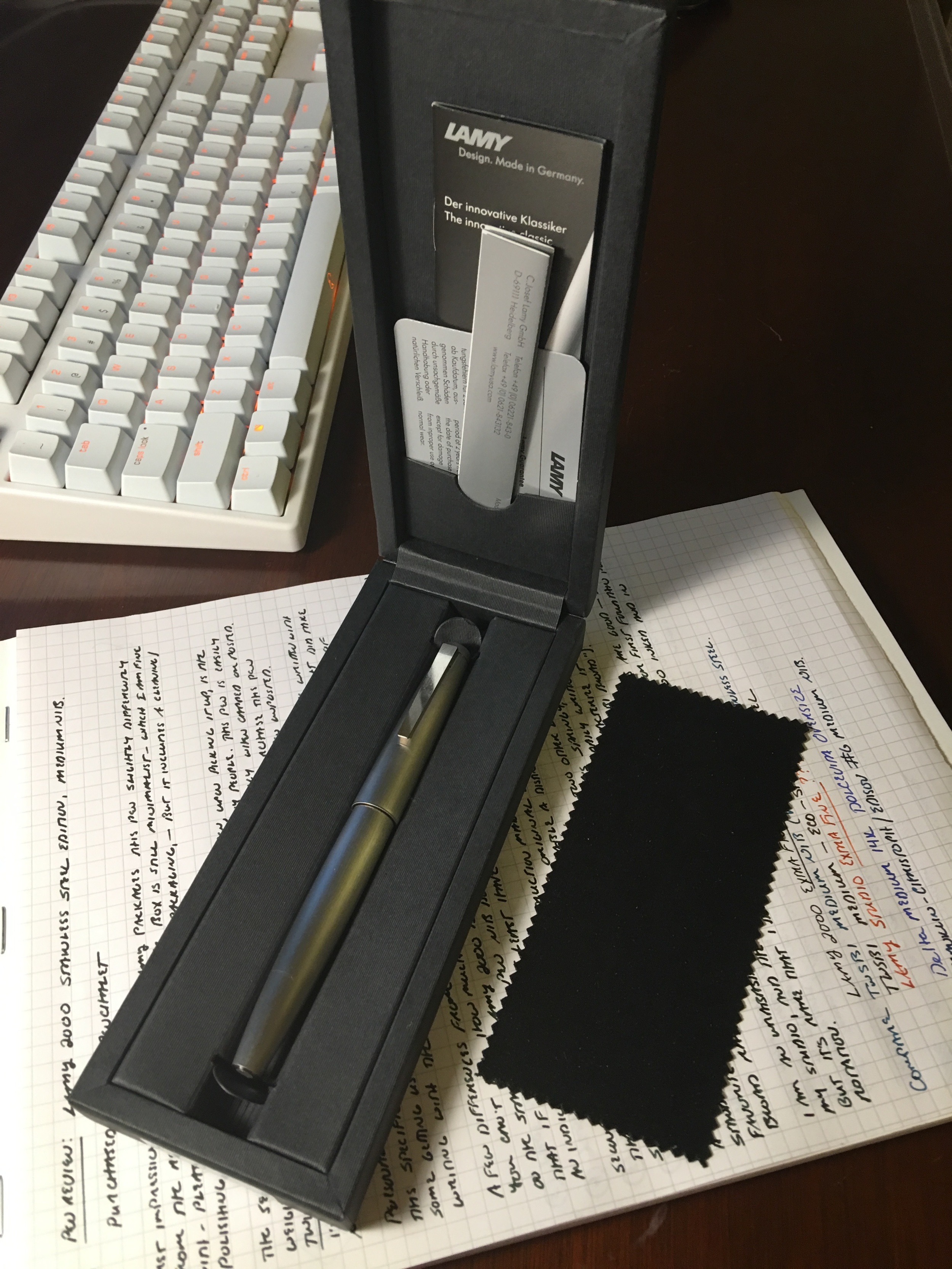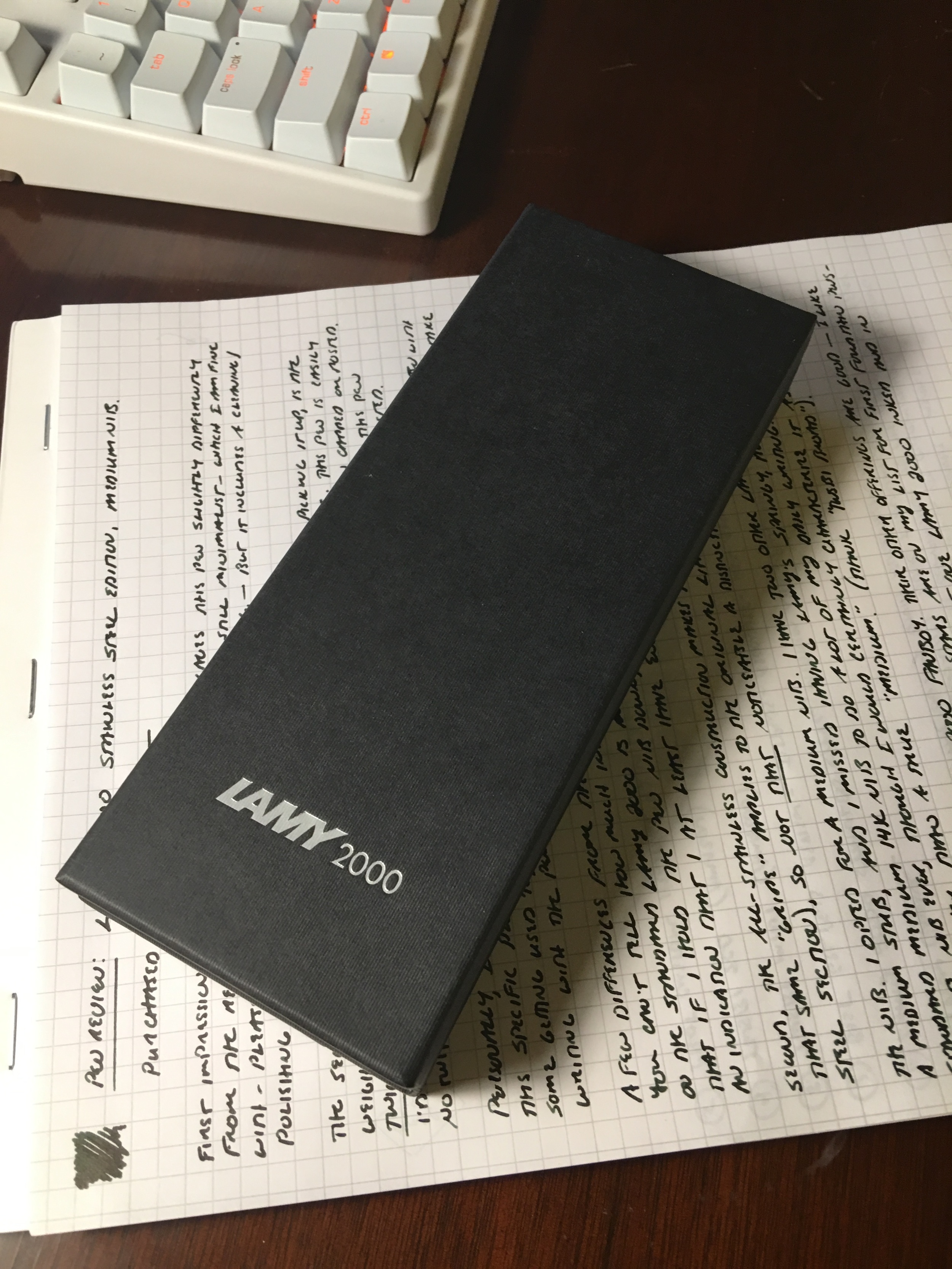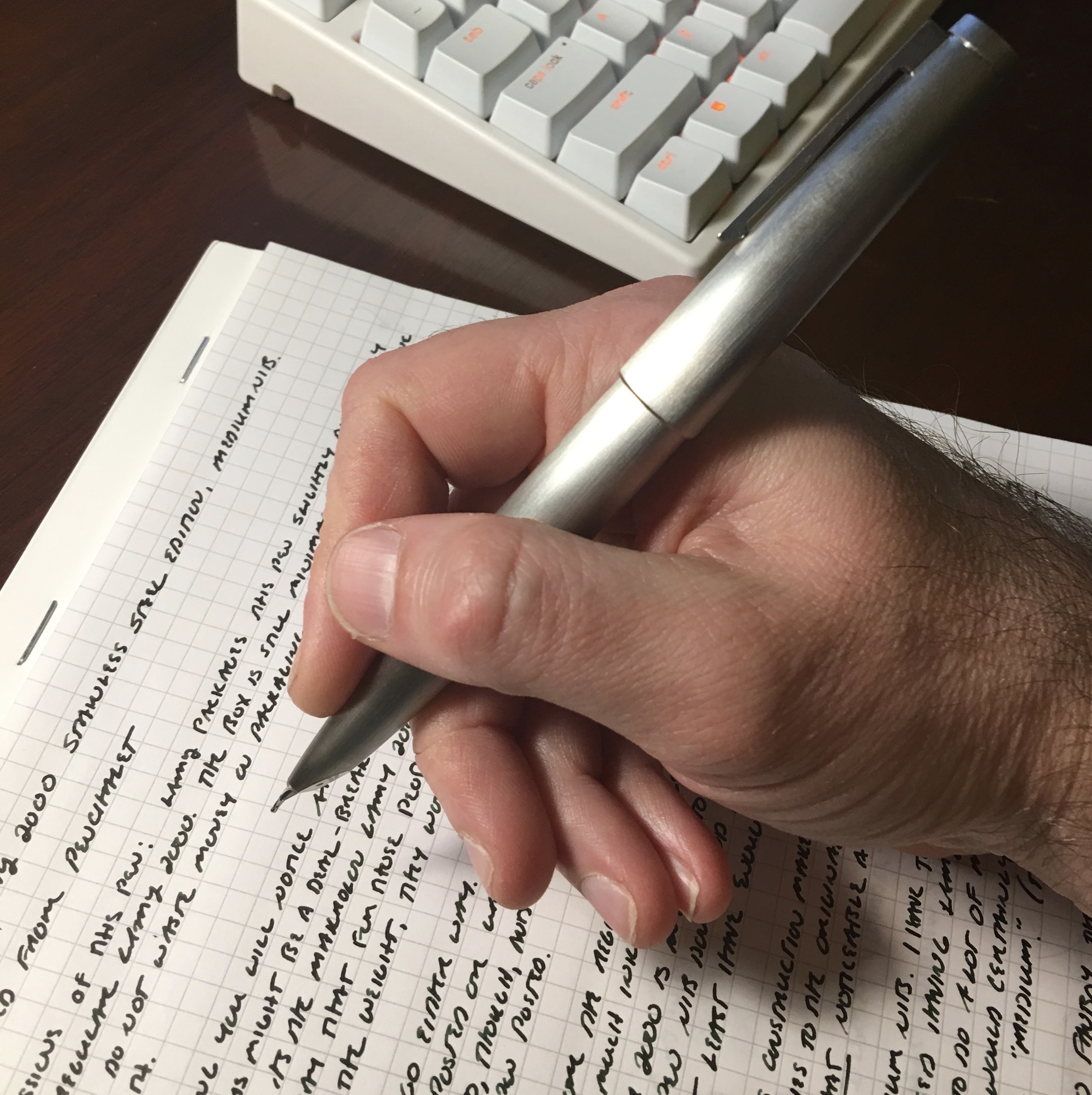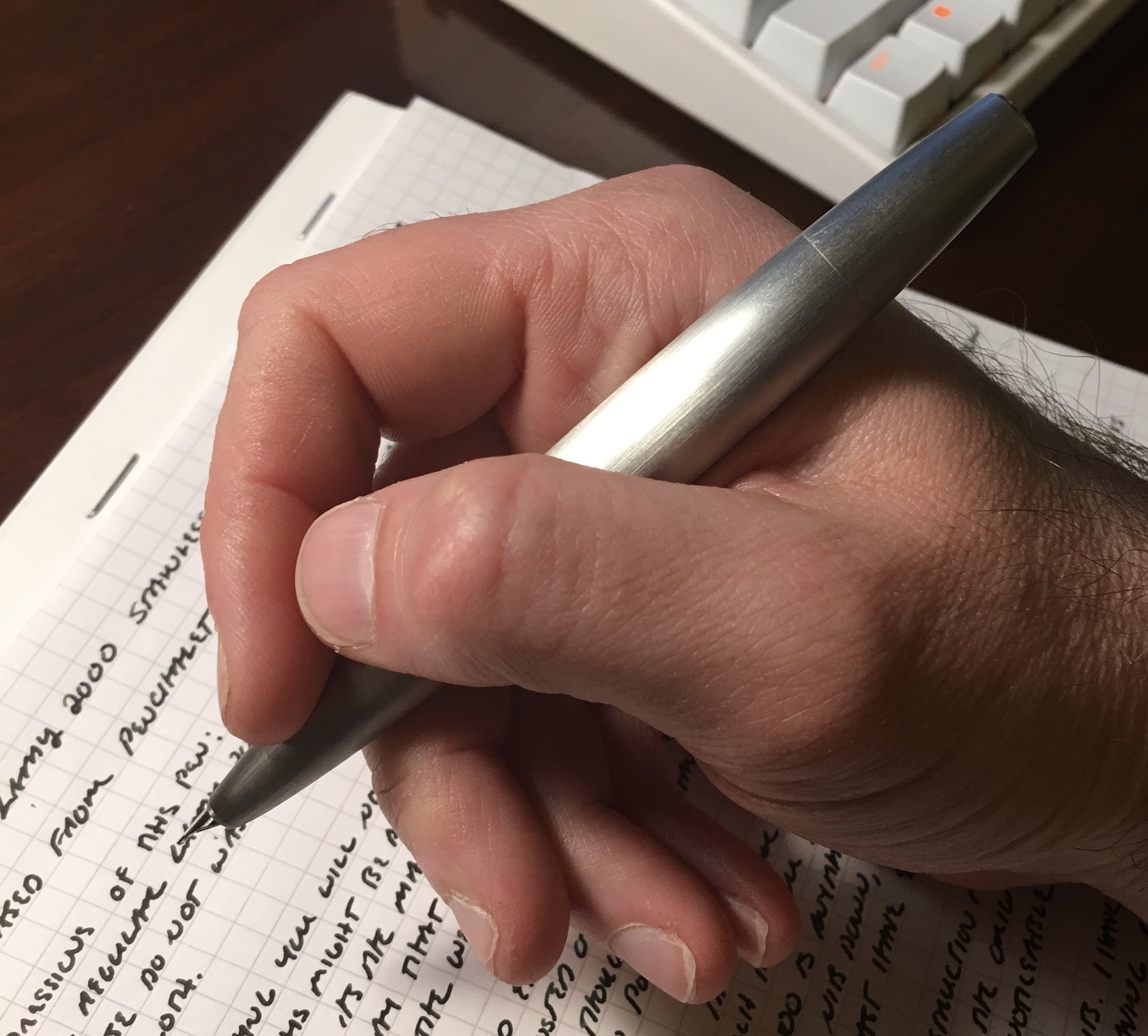The TWSBI Eco may come closest to dethroning the Lamy Safari as the most popular pen you can buy under $30. With it's super smooth nib, modern design, and excellent piston-filling system, I can recommend the Eco to anyone, not just beginners. While not all pen people may appreciate its looks, this is a solid writer, and may even supplant the TWSBI 580 in my rotation.
Build. The Eco has two things to offer that distinguish it (in a good way) from other pens in its price range: a comfortable grip section, and a barrel length suitable for both posted and unposted use. First, the grip section (and the rest of the barrel) is round, and very comfortable to hold. The Lamy Safari (what I would deem the Eco's main competitor) features a triangular grip, supposedly to help students hold their pen correctly, but at the end of the day this mostly serves to limit the pen's appeal because many people simply can't use this grip comfortably. Also, by eliminating the faceted barrel, many people have speculated that the Eco will last longer and be less prone to cracking due to reduced stress on the plastic.
I regularly use the Eco both posted and unposted. Some people find that posting the cap on the Eco makes the pen unwieldy. The cap may not be the prettiest thing to look at, but it weighs next to nothing and I don't think that posting it renders the pen unreasonably long or uncomfortable to write with. Regardless, unlike the Safari, the body of the Eco is long enough to allow me to write comfortably with the pen unposted.
It's a bit longer than my personal preference, but I can still use the TWSBI Eco posted.
Aesthetics/Design. People either love or hate the Eco's design. I like it because it's different. True, there's a bit of a mismatch between the round barrel and the chunky, faceted cap and piston knob, but somehow the design works. The Eco is a modern, minimalist fountain pen, and looks exactly like what one would expect a modern, minimalist fountain pen to look like. To deliver a pen at the $30 price point, you pretty much have to use plastic, so criticism that the pen "looks cheap" is misplaced--the Eco is intended to be an inexpensive pen, and to knock it because it looks "plasticky" or because it has a less expensive clip than the TWSBI 580 strikes me as unfair.
The cap and the clip on the TWSBI Eco have generated
The Nib. If there's one area where TWSBI has improved by leaps and bounds over the years, it's with their nibs, which I believe are made by JoWo. Both the Eco and the Vac Mini (which I recently reviewed) feature a #5 stainless steel nib, and both of my pens are excellent writers. Like my Vac Mini, I picked up an Eco with a medium nib, I'd characterize it as a "true medium," slightly on the wet side. While the Vac Mini can occasionally hard-start or skip, due to the nature of a vacuum filling system and how ink is delivered to the feed, I have had zero flow issues with the Eco.
A shot of the TWSBI Eco nib and round, transparent section. For some reason, I love the clear section on the Eco. You can really see how the ink saturates the feed and works its way down to the nib.
Takeaways. I can recommend the TWSBI Eco for anyone looking for a good daily writer that won't break the bank. It's certainly not limited to beginners or people looking to buy their "first fountain pen". That said, there are a couple reasons why the Eco won't dethrone the Pilot Metropolitan and others anytime soon as my recommended first-choice for an entry-level fountain pen. First of all is price. The Metropolitan is less expensive, and with the new Retro-Pop collection, the colors aren't necessarily limited to black, silver, and gold. The Eco sits at a slightly higher "next step" price point. As I've said before, I'm also hesitant to recommend a piston filler as a "first pen," since many fountain pen newbies are uncomfortable starting out filling from a bottle.
The TWSBI Eco does, however, sit appropriately near the top of my "Top Pens Under $75" list, and I'm considering moving it to the #1 slot. So far, it's that good, but I want to give myself a few months with it to be sure.
As of April 2020, you can purchase TWSBI Pens, including the ECO series, directly from The T.G.S. Curated Shop. The ECO starts at $30.99 for standard versions, and a pen with Rose Gold trim will run you $49.99.

